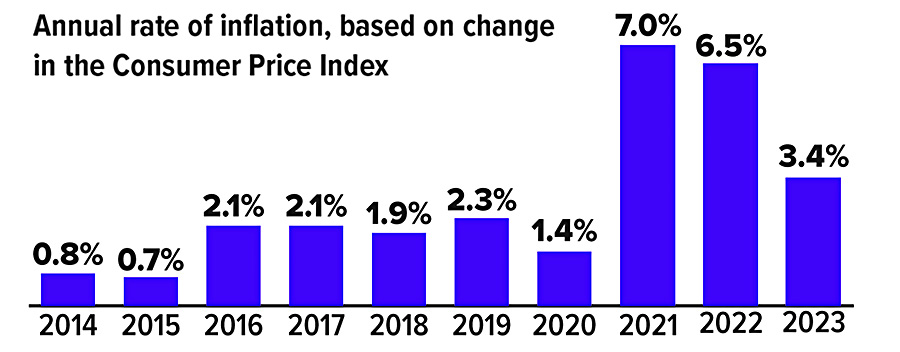What's Your Real Return?

As an investor, you probably track the return on your investments. But it's likely that you look at the nominal return, which is the percentage increase or decrease in the value of an investment over a given period of time, usually expressed as an annual return. To estimate actual income or growth potential in order to target financial goals, such as a certain level of retirement income, it's important to consider the real return, which includes the effects of taxes and inflation.
Let's say you want to purchase a bank-issued certificate of deposit (CD), because you like the lower risk and fixed interest rate that a CD can offer. CD rates have risen substantially with the Federal Reserve's aggressive increases in the federal funds rate, so let's say you find a CD that offers 5% annual interest. That could be attractive. However, if you're taxed at the 22% federal income tax rate, 1.1% will be gobbled up by federal income tax on the interest.
That still leaves an interest rate of 3.9%, but you should consider the purchasing power of the interest. For example, inflation slowed to 3.4% in 2023 after hitting 40-year highs in 2021 and 2022 (see chart). But a 3.4% inflation rate would leave a real return of just 0.5%. If inflation slows further, the real return on this hypothetical CD would increase. However, if the Fed were to lower the benchmark federal funds rate in response, rates on CDs and other fixed-income investments might decline, reducing the real return on future CD and fixed-income purchases.

This hypothetical example doesn't represent the performance of any specific investment, but it illustrates the importance of understanding what you're actually earning after taxes and inflation. In some cases, the lower risk offered by an investment may be appealing enough that you're willing to accept a low real return. However, pursuing long-term goals such as retirement generally requires having some investments with the potential for higher returns, even if they carry a higher degree of risk.
The FDIC insures CDs and bank savings accounts, which generally provide a fixed rate of return, up to $250,000 per depositor, per insured institution. All investments are subject to risk, including the possible loss of principal. When sold, investments may be worth more or less than the original cost.


